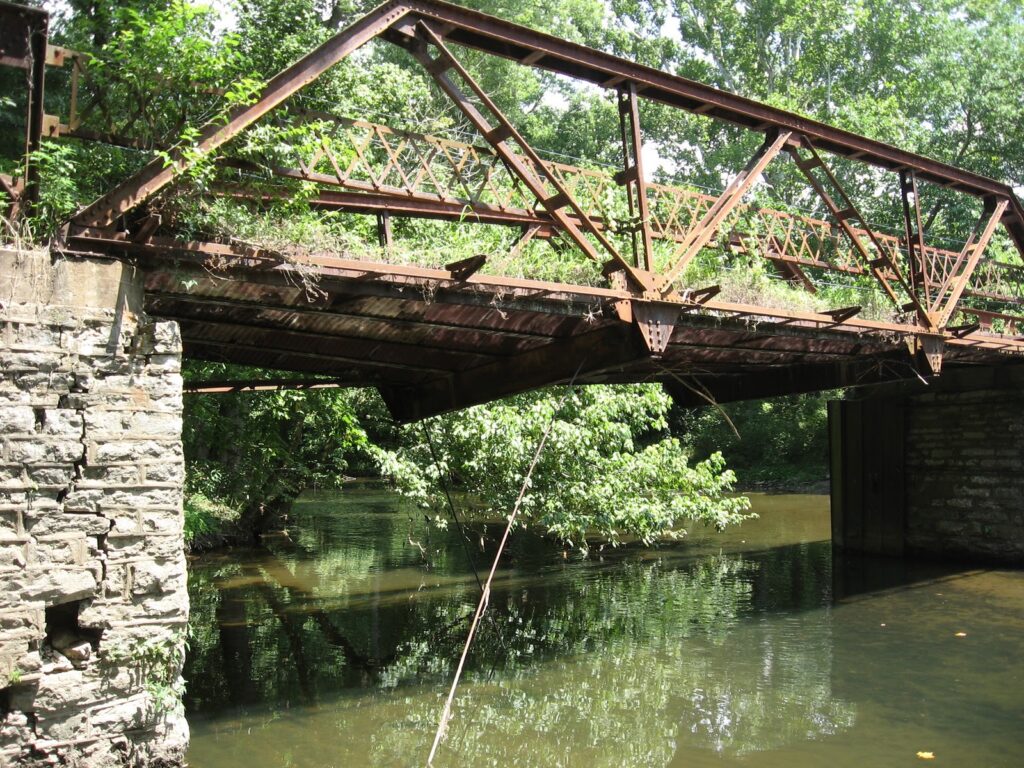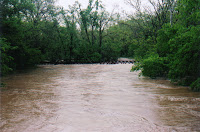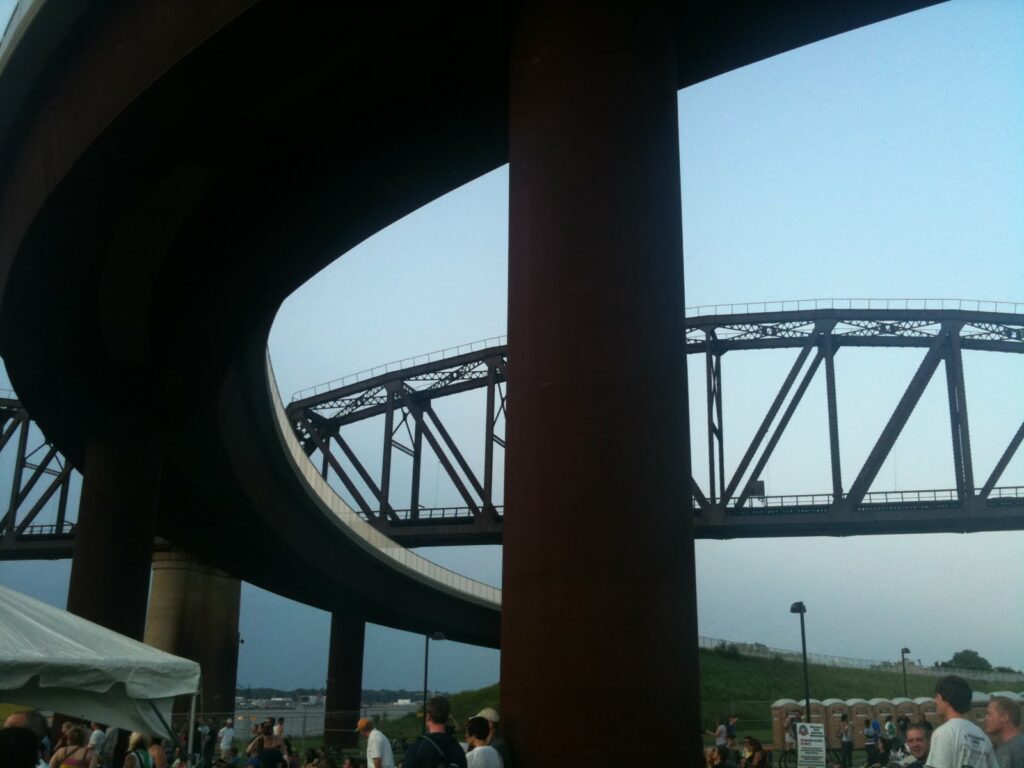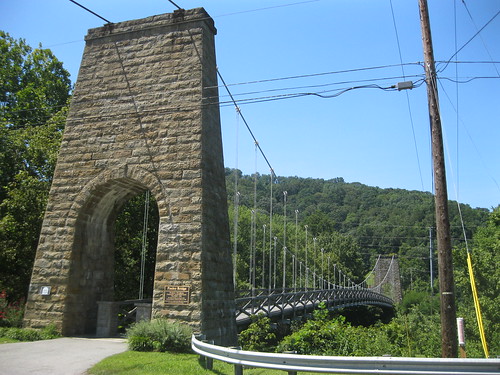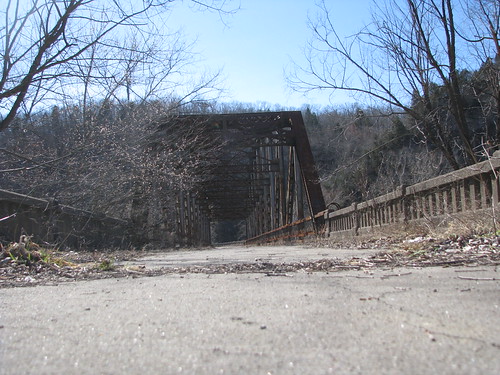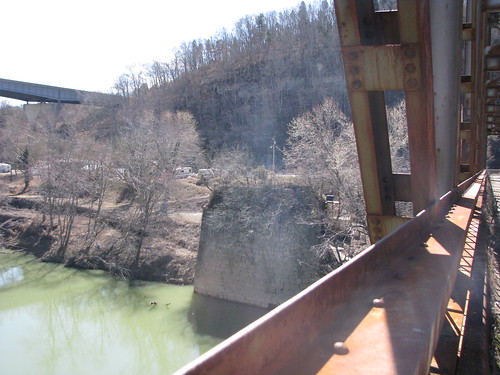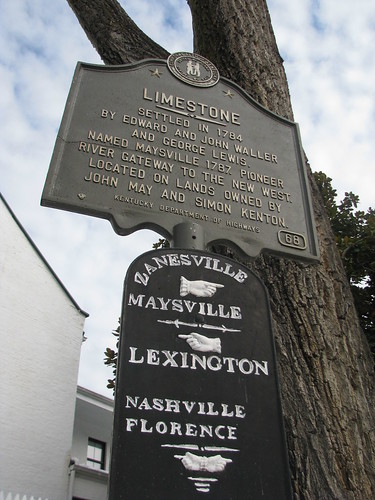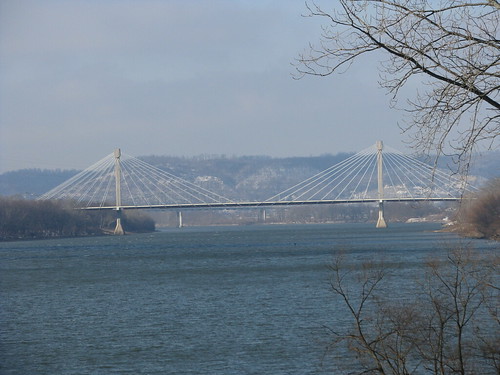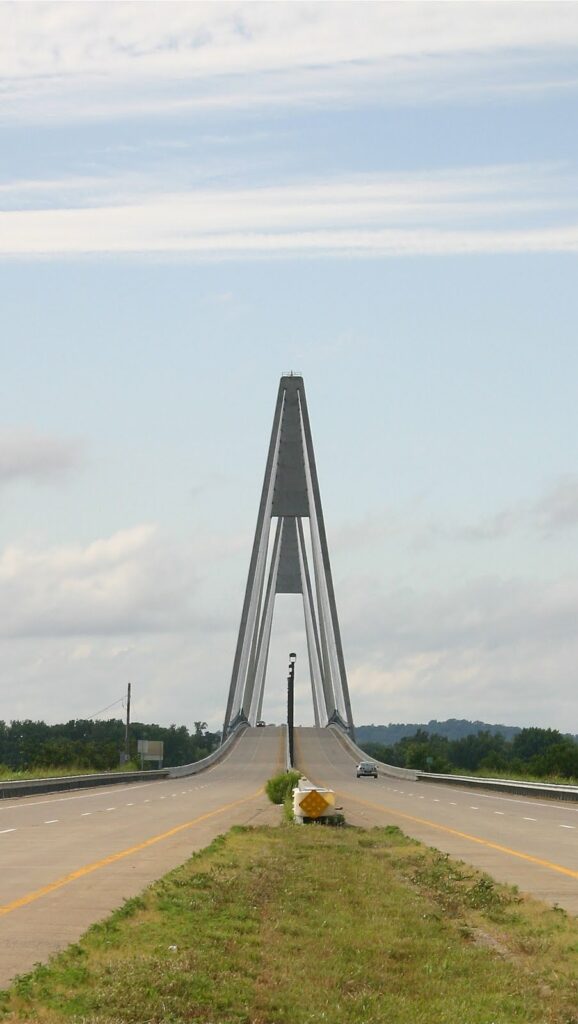 |
| Natcher Bridge – near Owensboro, Ky. |
The Natcher Bridge is enormous. Driving east out of Owensboro, the bridge looms before you even miles before you get close to it. It’s modern style is what I really think sets it apart. At the time of its construction, it was the longest cable stayed bridge over an inland waterway in the United States (4,505 feet long including approaches, yet only 67 feet wide). Opened in 2002, it was built to relieve traffic over the Glover Cary Bridge in downtown Owensboro several miles down river. The ultimate goal is for the bridge to be a part of a four lane highway system connecting Interstate 64 in southern Indiana and Interstate 65 at Bowling Green. The connector would utilize the existing Natcher Parkway would allow travelers to bypass Louisville.
About Rep. Natcher: He represented Kentucky as a Democrat in Congress for 41 years. Natcher was a champion of the freeway system. He holds the record for most consecutive votes in Congress. When he was sick, a vote was delayed so that he could attend. He died in 1994, before construction of the bridge had begun, but even the proposed bridge bore his name before his death.

